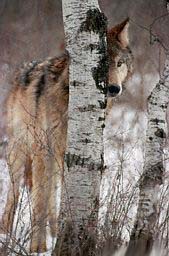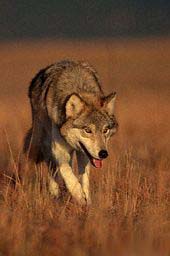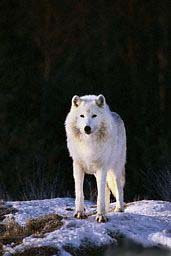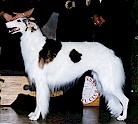|
DIMENSIONS: ecosystem |
Recreation Dimension of Wolf Management in Yellowstone
|
|||||||||||
|
Wolf
Watching
|
|
|
Wolf watching in Yellowstone National Park is an activity that is fast growing in popularity. Since the wolves' introduction in 1995 public awareness and interest in wolves and seeing wolves has growth exponentially. Most if not all of the wolf sightings have been in the Lamar Valley in the northeast corner of the park. During peak season it is possible to see cars parked at every turnout, their occupants just a few yards away, equipped with binoculars, eyes trained at the hills, waiting for a peak, just a glimpse, of one of the Yellowstine wolves. The growth in the northeast corner of the park has been somewhat unexpected. It was hypothesized that wolves would have a positive effect on the tourism in the area but the extent of that interest was grossly miscalculated. The roads in the area, traditionally less frequented than those that connect the more established tourist attractions, have been flooded in recent years with an uncharacteric level of traffic and the ecosystem, not accustomed to human disturbance and observation in such intensities, has been left on its heels. In the winter the road from the north entrance at Mammoth to Cooke City remains open as it is the only way to get to the small Rocky Mountain town. During the winter months, despite the cold, the roads are still frequently lined with cars in search of wolves. This is probably the best time to view the animals as they stick out more against the white landscape and the crows, although there, are less. |
 |
 |
|
|
What You'll Need: A car -- Serious wolf watching is not a task to be done on foot. Packs are miles apart and in the early hours of morning, walking is just not feasible. Binoculars or Spotting Scope -- Wolves are timid predators and do not venture terribly close to tourists like the ungulates to the south. Many wolve sighting are had from across valleys or from turn-outs at overlooks. Binoculars will do but in many cases spotting scopes are neccesary to see anything at many of the distances the average wolf watcher must deal with. A Chair -- Patience is a virtue and wolf watching is a very virtuous activity. Expect to wait when you find a good spot. Comfort dictates adequate posterior placement. Time -- As stated before, wolf watching is not for the faint of heart. In order to see wolves, one must be willing to sit and let them come to you. |
 |
 |
|
|
Where to Go and What to Do: The Lamar Valley is the place to go. Many of the park's packs frequent the ares. Plan on a long drive. The Lamar Valley is pretty remote and in peak season, traffic can make this drive time consuming. Think and act like a wolf. Wolves are early risers. Get up early if you want to increase your chances or actually seeing a kill or wolves at all. Bring the right
tools. Binoculars are a must. Wolves do not chill out by
the roads as do elk and bison. Watch the hills, and the
hills are far away. Enjoy the Lamar Valley. It's pretty. Even if you don't get to see wolves, you are treated to one of the more remote and wild portions of the park. |
 |


